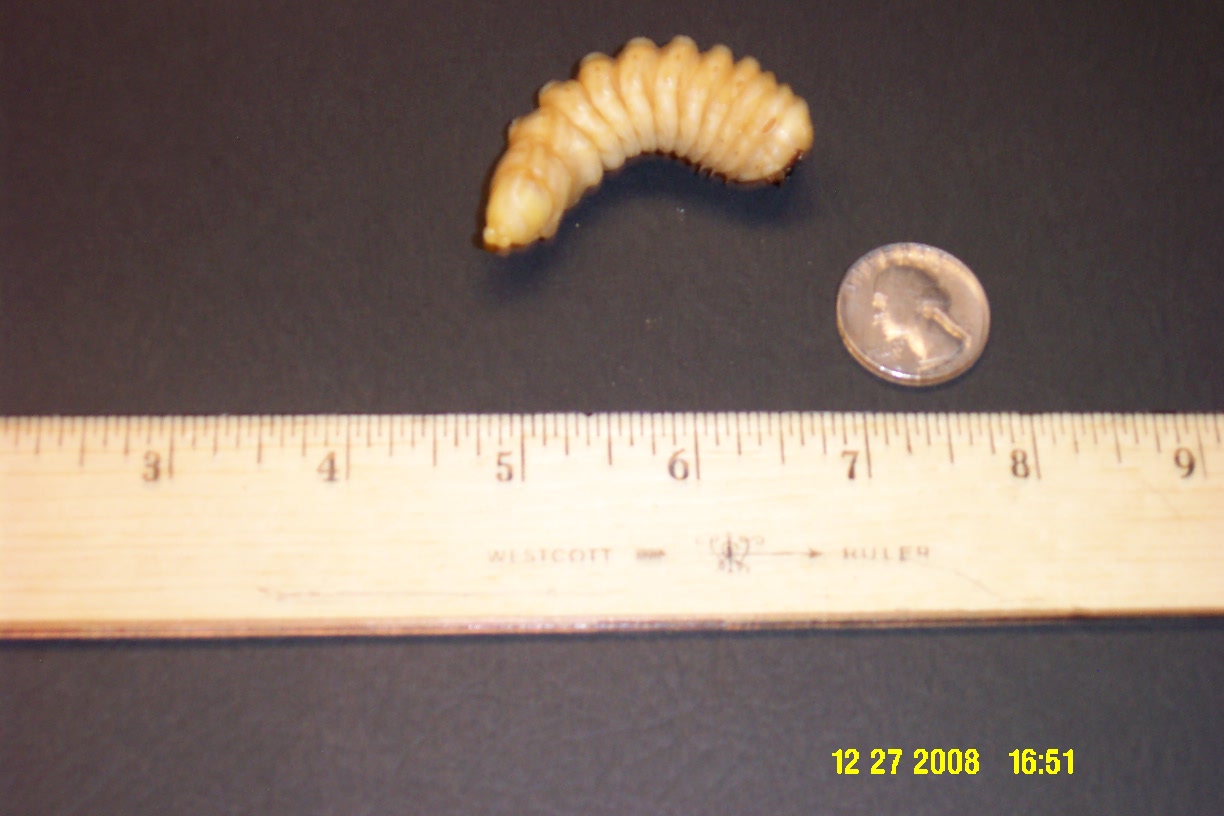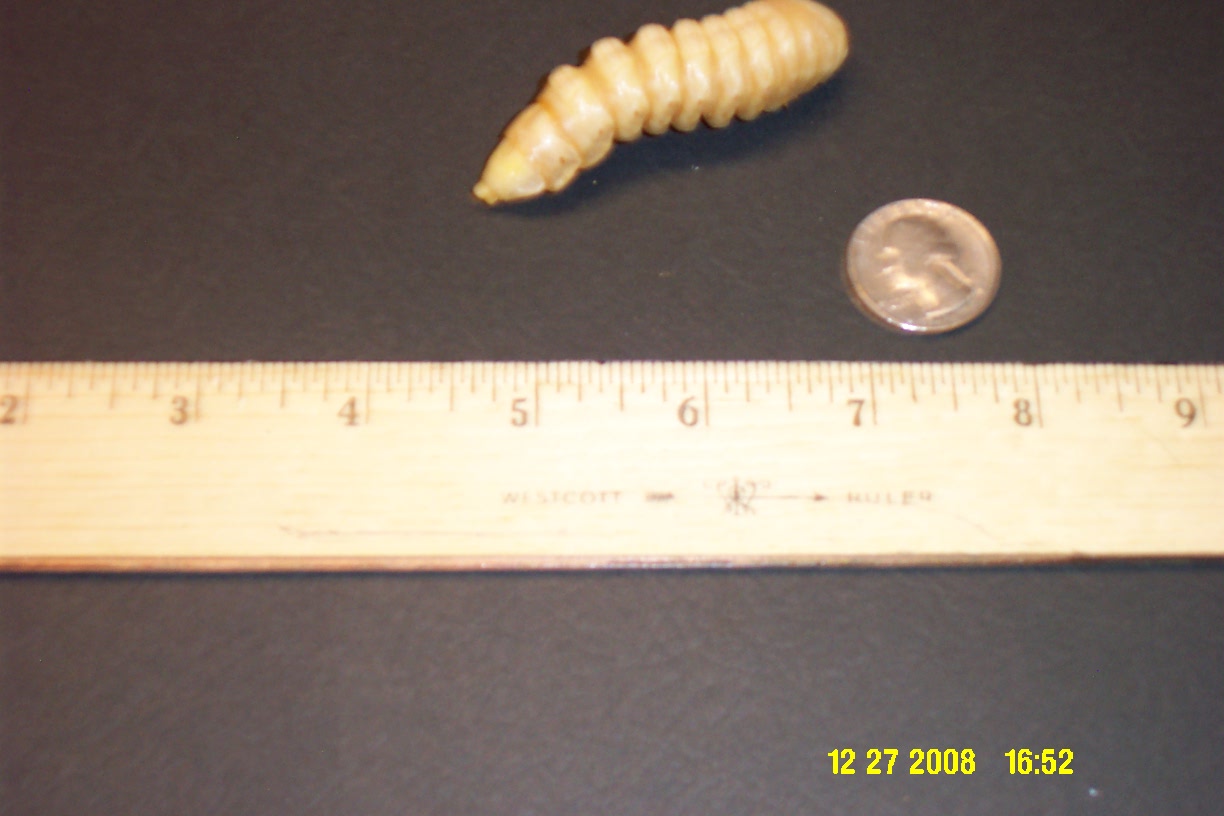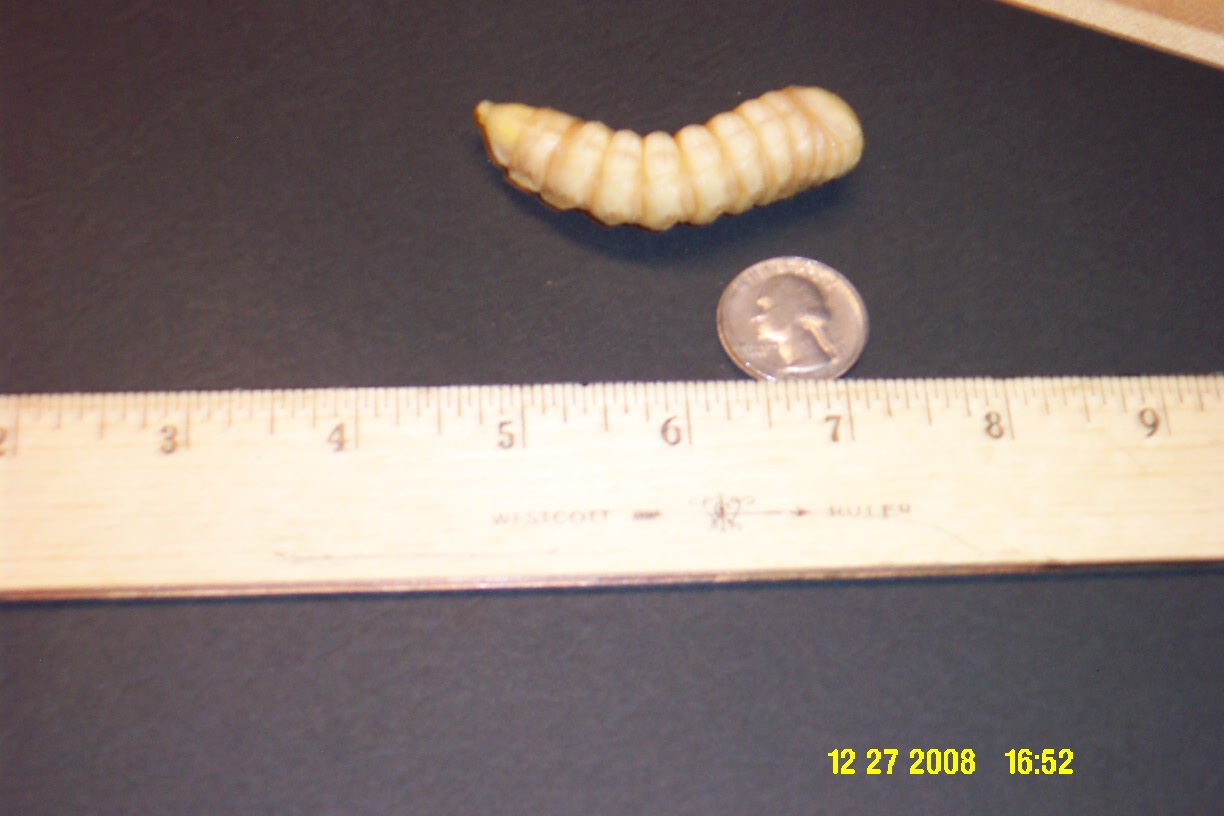Longhorn Beetles (family Cerambycidae) on Dec 30, 2008
Submitter has sample
Description of specimen
A very large Larva approximately 3 inches long with a circumference about the size of my thumb. Ugly looking pincers on the large end and a rectum looking thing on the other end.




Reporter
Dec. 30, 2008, 4:59 a.m.
Lisa DeBruyckere
Dec. 30, 2008, 5:08 a.m.
Reporter
Dec. 30, 2008, 5:14 a.m.
Lisa DeBruyckere
Dec. 30, 2008, 5:20 a.m.
Larvae typically take 1-3 years to develop (dependent on species and environmental conditions). They feed only in dead/dieing wood that is still moist. The adults emerge anytime between spring and fall and cause a small amount of damage feeding on young branches. The adults are strong fliers that are attracted to chemicals that are given off by damaged/recently dead trees. After mating the a small notch is made in the bark of an acceptable host and the female deposits eggs.
The eggs hatch typically with in a few weeks and the larvae begin feeding.
These beetles are important for forest ecosystems because they help break down fallen material so it reenter the nutrient cycle.
Lisa DeBruyckere
Dec. 30, 2008, 12:23 p.m.
Reporter
Dec. 30, 2008, 12:54 p.m.
Lisa DeBruyckere
Dec. 30, 2008, 1:02 p.m.
Reporter
Dec. 30, 2008, 1:10 p.m.